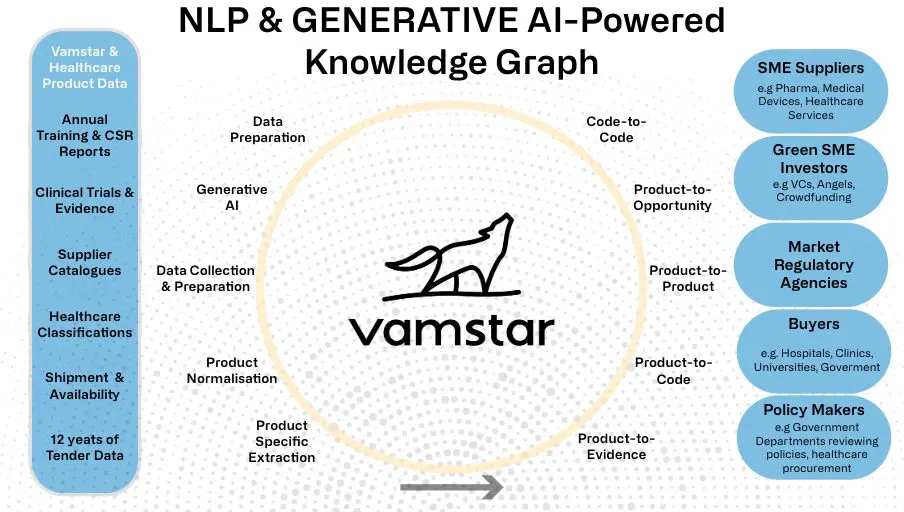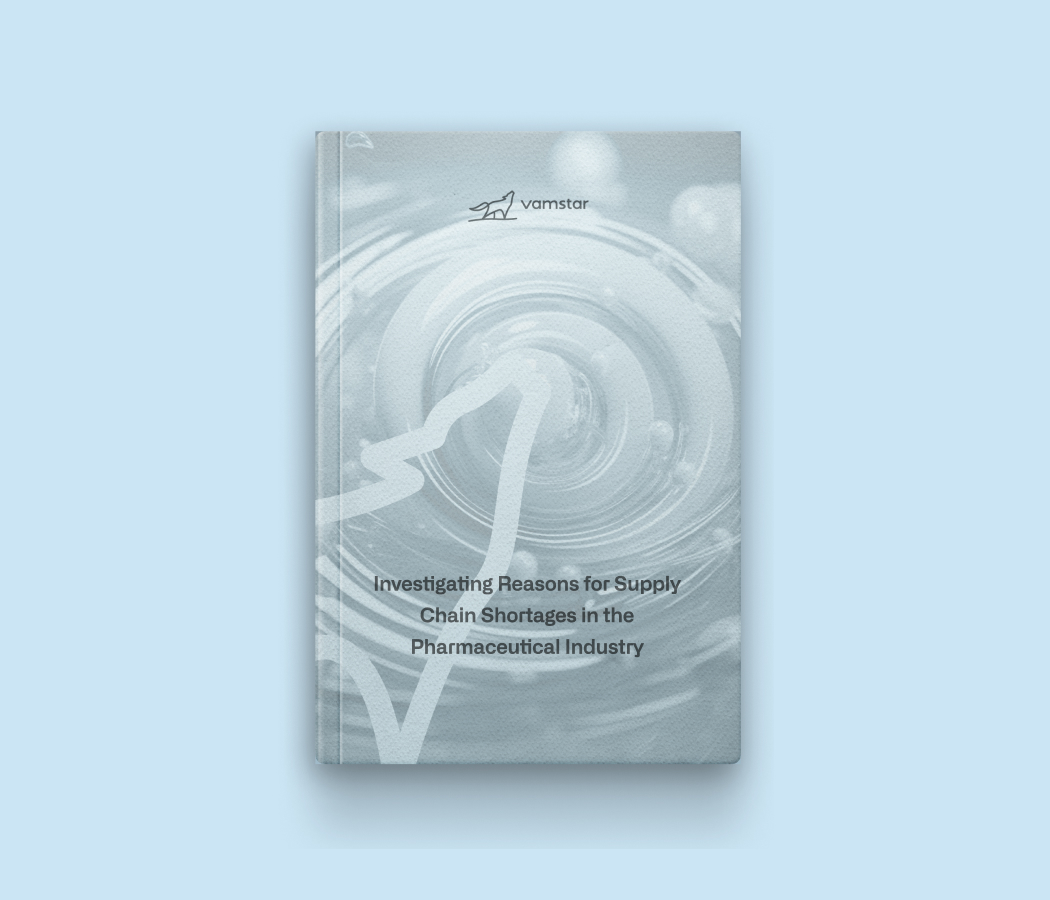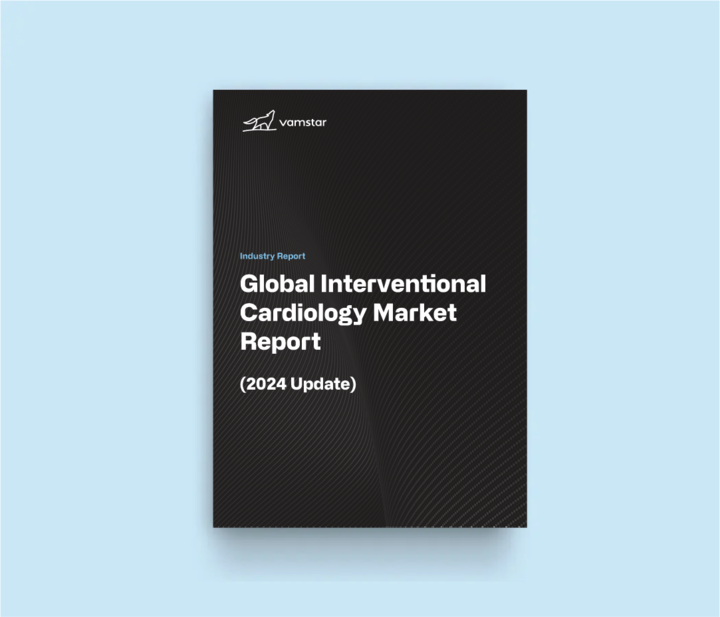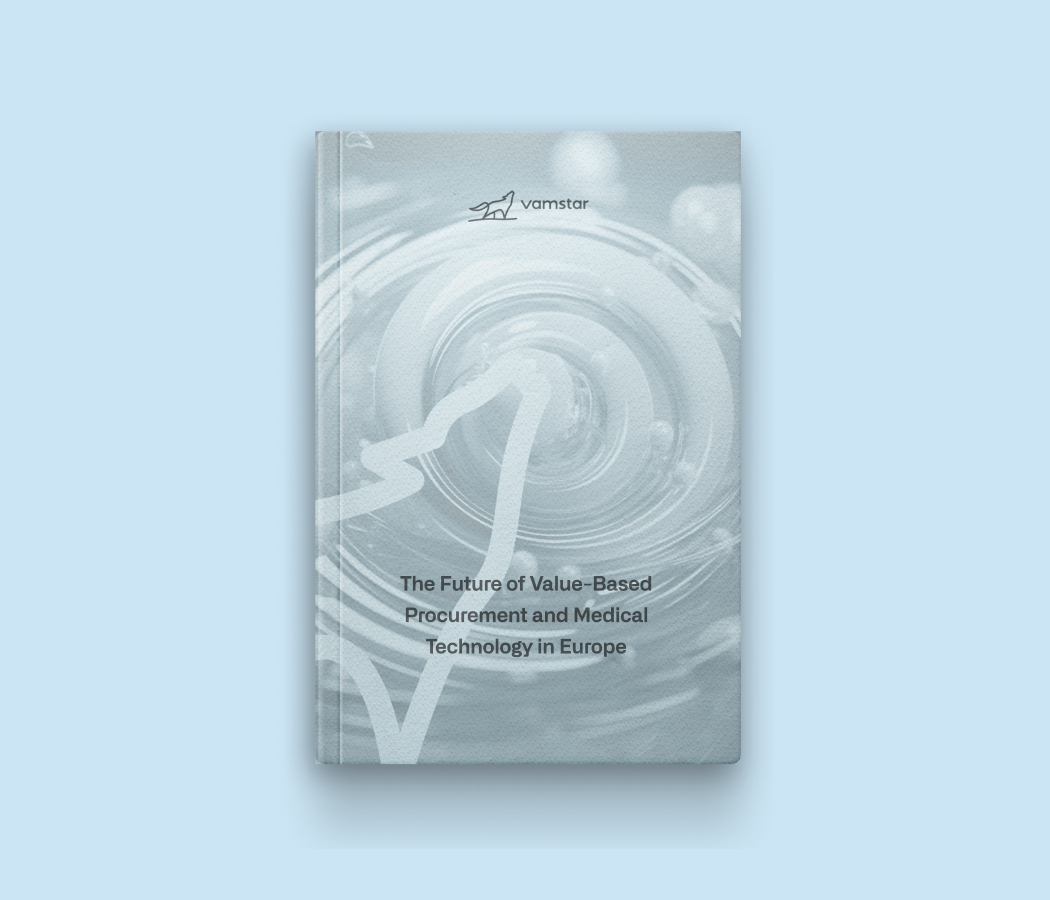6 minutes read
Using generative AI, knowledge graphs and natural language processing in MedTech product and code matching A
Medical supplies include a wide range of products, from surgical instruments to bandages, that are used in healthcare facilities. Properly classifying and assigning codes to these medical supplies is critical for sourcing, tracking, billing, ordering, inventory management, and patient safety.
Key challenges include the high cost of healthcare supply-chain transactions (up to 4x higher compared to other industries), significant waste incurred e.g. $5Bn worth of COVID-19 PPE deemed ‘unusable’. In addition globally, 10% to 34% of health care spendings of OCED countries were wasted on inappropriate care.
We have broken down the challenge into code-to-code, code-to-product, product-to-product, product-to-evidence, and product-to-opportunity. More specifically
- Code-to-code: suppose you have one code such as CPV and you want to match this to your own internal code or other codes such as UNSPSC.
- Code-to-product: imagine as a buyer you onboard a new supplier with 30,000 items or items that you need to assign categories to. As a supplier I need to filter or assign buyer code to my products.
- Product-to-product: as a buyer I have lots of products in my basket of goods, of different brands or suppliers, how can you compare the products to find similar ones? As a supplier how can I understand the market landscape.
- Product-to-evidence: now as a buyer you want to screen the clinical evidence of many items, how do you do this at the moment? as a supplier I want to see what my competitors are doing
- Product-to-opportunity: as a buyer I want to see the supplier products, or as a supplier I want to see the opportunities I can participate in or my competitors are doing
Here is a selection of complexities involved in classification:
- Complexity, Diversity, and Standardisation Issues: The sheer variety of medical supplies, each with its unique specifications, makes classification intricate. Differentiating between products with minor variations can be challenging. There may be a lack of standardised naming conventions and categorisations for medical supplies, especially across different manufacturers or countries. Different vendors might use different names, codes, or specifications for similar products, making it challenging to maintain a standardised classification.
- Continuous Evolution of Products: As medical technology advances, new products are constantly introduced to the market. Keeping classification systems up-to-date becomes an ongoing task.
Overlapping Categories: Some medical supplies can fit into multiple categories, leading to confusion about proper classification. - Human Errors, Scale and Skill: Mistakes can occur in manual entry or categorisation processes, leading to misclassifications. Staff needs to be trained to understand and use the classification system correctly, and this training has to be updated as the system evolves.
- Regulatory and Compliance Requirements: Different regions or countries might have different regulations concerning medical supplies, which can affect how they need to be classified or coded. In multinational settings, translation and localisation can introduce further complexity to classification.
- Interoperability and Integration: Different systems within a healthcare facility, like billing, electronic health records, and inventory management, need to communicate seamlessly. Discrepancies in code classifications can lead to issues in this integration. Legacy systems in hospitals or facilities might still rely on outdated classification systems, leading to discrepancies when integrating with newer systems or vendors. Classification systems need to be compatible with inventory management systems to ensure seamless tracking of medical supplies usage and restocking needs.
Addressing these challenges requires a combination of technology, training, and careful planning. Solutions might include investing in modern inventory management systems, providing ongoing staff training, collaborating with vendors for standardisation, and regularly reviewing and updating classification systems. Doing this manually globally for all healthcare products and services is not possible and this needs an automated tracking and monitoring solution, luckily with the emergence of big data, generative AI, and graph analytics this is possible.
While ChatGPT-4 might be good at summarising text, our data scientists have found that using it for code-to-code matching such as GMDN to UNSPSC leads to incorrect classification code being assigned even after careful data preparation. These inaccurate responses are a process known as hallucination and has widely been discussed in the press as a major issue on trust and quality. When you match product-to-code things can also quickly go out of hand due to the noise.
Vamstar has deep experience in cutting edge data science and artificial intelligence in the Healthcare and MedTech sectors. We have been awarded leading Innovate UK Research and AI Venture funding, and have an active collaboration with leading Universities.
We have developed ground-breaking solutions in the form of a platform driven by AI-technologies, to allow the standardisation and automated cataloging of healthcare products/services, enriched with information harvested from heterogeneous sources to enhance procurement decision making.
We have collected, extracted using NLP, normalised, and enriched the largest public tendering datasets in the world from buyers such as hospitals, clinics, and universities. We for example know the live tender opportunities for MedTech products, the awarded suppliers, and purchasing patterns.
In parallel we have collected, normalised, and enriched products and items from manufacturer, supplier and distributor catalogues using custom natural language processing and generative AI. Giving us a full understanding of the supply-side portfolios and offerings.

We combined these two massive healthcare and MedTech specific datasets, and created the largest knowledge graph that allows us to perform graph matching of products and codes at hyperscale never seen before, using low level product features, and specifications in healthcare across languages.
Creating the world’s largest healthcare and life sciences knowledge graph – interconnecting all healthcare buyers, suppliers, products, services, and medical devices across all countries is a complex task that needs unique skill sets, and a lot of normalised and enriched data. The underlying graph was created using complex natural language processing (NLP), Generative AI, and Machine Learning models including the use of GPU instances for training our custom deep learning NLP models. In collaboration with the University of Sheffield, global leaders in NLP, we scaled out both in terms of data we process and in terms of the nodes and relationships represented in the network graph.
We have layered three state-of-the-art technologies of Generative AI, Natural Language Processing, and Knowledge Graphs together in perfect harmony to auto-match all of your code and product assignment and classifications. This is orchestrated using a complex series of proprietary big data and machine learning pipelines that easily scale in the Cloud.
We have the unique ability to perform highly scalable and accurate:
- Code-to-code: Auto matching CPV, UNSPC, GMDN, GUDID, UDI, eClass and internal code/catalogue/taxonomy matching.
- Code-to-product: Assign CPV, UNSPC, eClass or internal code/catalogue/taxonomy to products.
- Product-to-product: compare products with other products, and provide a matching score.
- Product-to-evidence: summarise the clinical evidence for a product or group of products.
- Product-to-opportunity: we have the ability to match a tender or private opportunity to a supplier products.
Vamstar is the leading AI-powered B2B Healthcare and Lifesciences Exchange platform, aggregating and analysing over $750 billion in spending across 86,000 buyers from public and private healthcare product and service sources in 100+ countries. Vamstar’s cloud-based supply chain technology connects both buyers and suppliers to automate key business processes, translating data and outcome-based analytics into meaningful action for the healthcare ecosystem to move fast, operate efficiently and achieve great synergies, enabling better patient care and maximizing industry savings for its clients.
We use Big Data and Machine learning to enable smart sourcing, faster tendering, simplified contracting, real-time opportunities, embedded intelligence, and related services, including the web-based trading of healthcare products between hospitals, clinics, laboratories, and suppliers in the market.
By seeing the big picture and all the connections, Vamstar provides healthcare stakeholders with valuable market insights and perspectives. Vamstar partners with leaders in the industry, academia, and government in 100+ countries to apply higher-level thinking to daily tasks and strategic issues. They offer their customers solutions to make them more efficient and help them make data-driven informed decisions to secure their future.
Other Materials
Book a 30 minutes meeting with us
Welcome to our scheduling page! Please choose an available date below to get started.
30 minutes meeting
We’ll email you the meeting link








